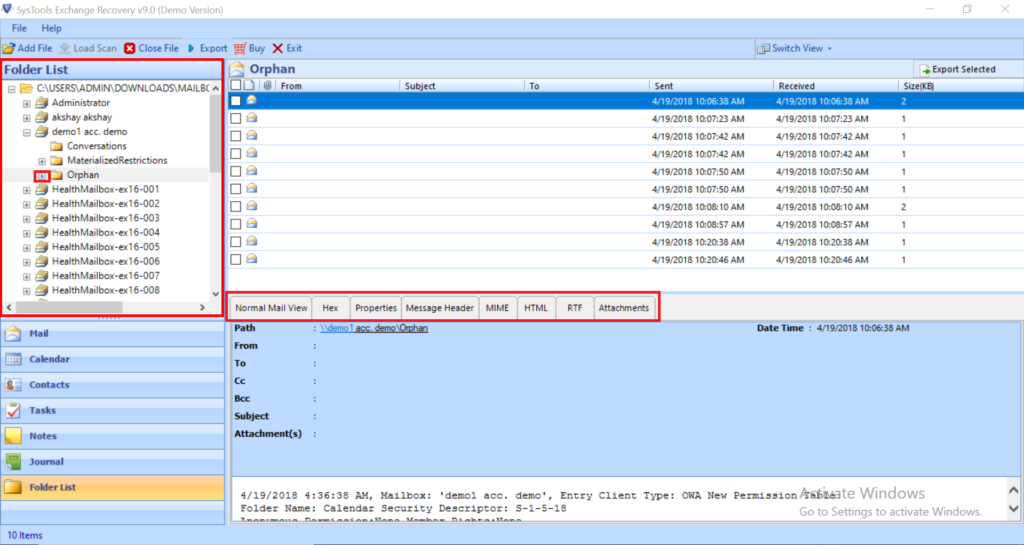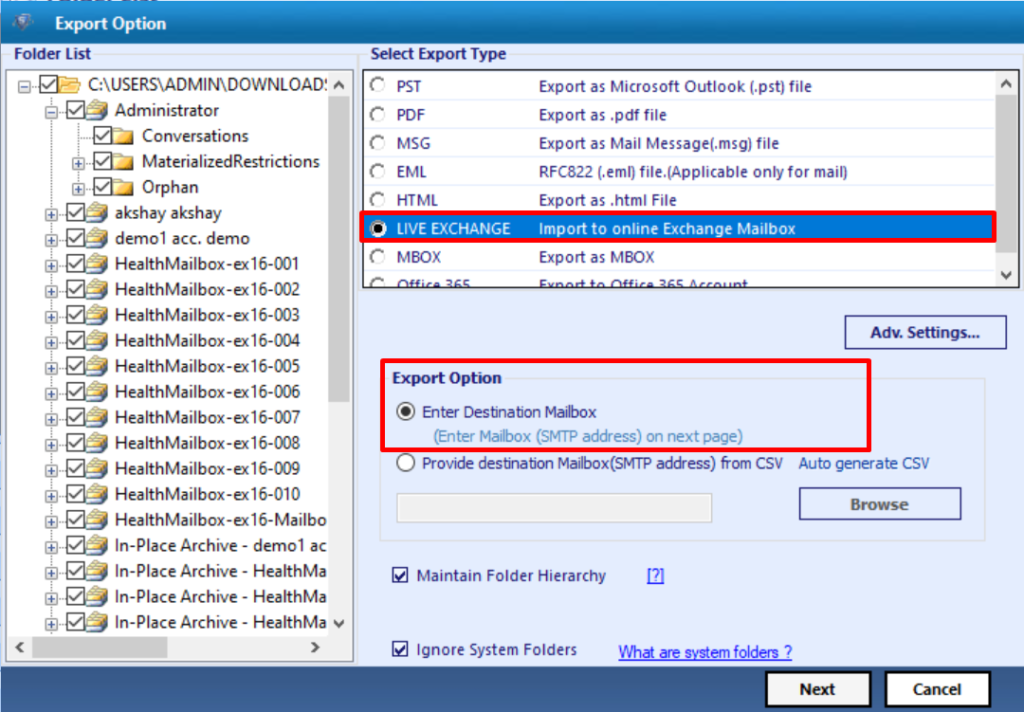Granular Level Recovery of EDB Mailbox Items

Summary: Use Systools Granular level Recovery software to recover specific items from corrupt Exchange mailboxes. With Granular recovery techniques, to first repair exchange mailbox and then move single items stored in Exchange EDB Files such as emails, contacts, calendar, task and journal details.
Use Granular Level Exchange Recovery to Restore Specific Items
Microsoft Exchange Server is a platform deployed on the Windows Server operating system for use within a business or larger enterprise. It is developed by Microsoft and widely used as Mail Server, Contact Manager, Calendaring software. The database of the entire mailboxes is stored in two types of EDB file formats that are public and private, according to the different versions of Exchange Server.
There are many conditions and reasons due to which Exchange EDB file can be corrupted either user can try manual methods to repair corrupt exchange mailbox but, how to recovers specific items from the corrupt mailbox. To recover particular items stored in mailboxes and fix the corruption issues, the given recovery method is used.
Thus, this article will explain users about granular level Exchange recovery and will provide a perfect solution to restore specific items from the mailbox.
What is Granular Level Recovery?
At the time of recovery process, when a user tries to extract only the specific items, not the entire data items to save storage space, time and resources. Then it can be referred to as Granular Level Exchange Recovery. Here, granular means that small or specific level. It is very helpful for users as it saves efforts and resources needed during the recovery process.
Pros of Using Granular Level Exchange Recovery
- Save space to restore mailboxes data files completely
- Junk items are not included in recovered data
- Save time and user efforts
- Data recovery from corrupted EDB files
Scenarios Occur During Recovery
- Time-consuming and lengthy recovery process
- A large amount of storage required to store database again
- Junk items present in recovered data
- Data accidentally delete at the time of recovery
To avoid all these types of situation it is always recommended to a user to perform Granular level Exchange recovery via a trouble-free solution that is Systools Exchange Recovery Tool. Software designed in such a way that, an Exchange user can easily not only repair corrupt Exchange Database EDB File of Version (Tool Support latest Exchange version 2016 and all below versions).
A user can download the software .exe file from below link to try the demo versions first of Granular Recovery Tool and follow the complete guide to recover single of specific items details of different mailboxes.
Perform Granular Level Recovery via SysTools Exchange Recovery Tool
Step 1: Install software on your local machine to “Start” the process of recovery.
Step 2: Click on “Add File” option to Select the Dismounted Exchange EDB File.
Step 3: Granular Recovery Tool offers various features before recovering specific items from Exchange mailboxes, which are given below:
- Add File: Two Option are offered by Software such as “Select File” and “Search File ”.
- Select File: Click on the option to “Browse and Select” to add file within the tool.
- Search File: In this Option, the software will automatically search the “EDB File” stored within in the local system.
Step 4: With Recovery Manager For Exchange Database Tool, a user can search EDB File in all the drives or specific drives according to need.
Users can remove email encryption (SMIME/OpenPGP) from offline/dismounted Exchange database mailboxes in bulk.
Scan Mode: To avoid any kind of corruption issues in the Exchange Mailbox file, Tool offers 2 Scanning Modes:
Quick Mode: To avoid any kind of small or minimum corruption issue, Check the “Radio” button of the “Quick Mode”.
Advance Mode: For Highly Corrupted Exchange EDB mailboxes file, a user can select the mode to perform the granular level of recovery to recover mailbox from Exchange database.
Step 5: After selecting the appropriate option click on “Add” option to Continue the process of recovery.
Step 6: Now Granular Exchange Recovery Tool Display the Mailboxes of User stored in EDB File in Hierarchy Order of the “Right Pane” of tool Window.
Step 7: Select the Mailboxes Folder of the user to preview the recovered specific items of “Inbox, Sent Box, Junk email sent items” and other Details. Tool Displays meta-details such as “From, Subject, To, sent” and other details of each email file store in user mailboxes.
Step 8: Click on Calendar Section to View Specific items stored in the Calendar Section
Step 9: To View Contacts details of a specific user, select the Contacts Section and check the desired user to view its contact. Tool Displays user Personal details, Contacts Details and other information related to it.
Step 10: User Granular Exchange Recovery Software to recover specific items from corrupt Exchange mailboxes. With Granular recovery techniques, repair Exchange public folder database & mailboxes and then move single items objects stored in Exchange EDB Files such as emails, contacts, calendar, task and journal details.
Step 11: After recovering specific items of different sections of mailboxes such as “Mail, Calendar, Contacts, Tasks, Notes, Journal” section, Click on “Export” option to move data into the different file format.
User can perform Exchange 2010 export mailbox to multiple PST files by using PST Split option.
Step 12: Granular Exchange Recovery tool offers various option to export recovered exchange mailboxes data into Outlook PST, / EML / MSG / PDF / HTML formats. You can save Exchange mailbox to PST file and multiple formats to safeguard the data.
User can also export the recovered specific items and export into Live Exchange Server and Office 365 account without moving complete mailboxes details of large file size.
Step 13: After Completing the Export Process, Software displays details of items count with the exported path. Save them into CSV format for later use and reference.
Conclusion
There are many items such as emails, contacts, task etc. present in the database of Exchange. The user wants to recover individual mailbox items then it can be done by granular level recovery via Exchange Recovery Tool. It requires less space and is also not a time-consuming process. It can be also used to extract accidentally deleted data or to recover data from corrupted or damaged EDB file. This tools has many features and designed in a user-friendly way. Just with few click user can perform granular level Exchange recovery to restore specific items via Exchange Recovery Tool.







